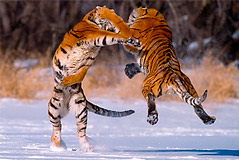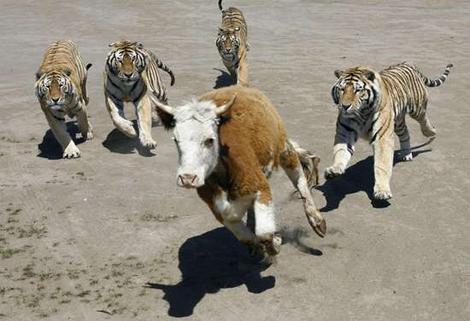|
Tiger CLASSIFICATION GENERAL INFO SPECIAL FEATURES HABITAT DIET REPRODUCTION BODY SYSTEMS HUMAN IMPACT WEBLINKS SOURCES
| ||||
|
Kingdom: Animalia SPECIAL FEATURES REPRODUCTION |
GENERAL
INFO:
The tiger is a carnivorous mammal. It is the largest living cat that can grow to be as large as 11 feet long and weigh up to 700 lbs. They are an endangered species with only about 7,300 left in the wild. They live to be about 10- 15 years old. Even though the tiger is a ferocious carnivore they usually do not attack humans. Only on rare occasions have there been cases where old or wounded tigers have attacked humans. BODY SYSTEMS Skeletal: Endoskeleton made of bones. Digestive: The digestive system consists of the stomach, liver, pancreas, small intestine, and large intestine. Respratory: 2 lungs that exchange oxygen required to fuel the high metabolism of endothermic animals. Diaphragm to pull air into lungs. Circulatory: 2 loop system with a 4 chamber heart. Excretory: Tigers kidneys excrete urea from the blood and dilute to make urine. Reproductive: 2 seperate sexes (male and female), internal fertilization. Nervous: Complex brain with large cerebrum capable of solving problems. A dorsal spinal chord running along the spine. |
HABITAT:
The tiger is generally found in India, but also lives in China, Russia, and Southeast Asia. They live in jungles or grasslands and take shelter in thickets or rock crevices.
DIET: HUMAN IMPACT: FUN
TIGER GAME http://www.worldwildlife.org/fun/quizzes/tigers/ Tiger Videos
| ||




